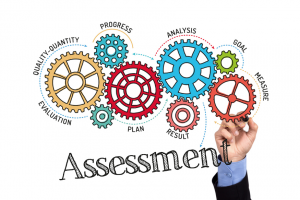
Why do we hate giving or receiving feedback? Why are we so attached to doing things our own way … even when we produce mediocre results?
The answer is, feedback triggers our brains to react in flight, fright, or freeze mode. When our boss or team member (or someone else) provides any feedback, our points of view and self-perceptions often feel threatened. Yes, it’s unwarranted. But these fears get in the way too often … and our results suffer.
Many leaders and bosses hesitate and avoid giving needed feedback out of fear of retaliation. Jeannette Seibly
Why is feedback so important? It gives you the ability to …
- Grow as a successful leader
- Take your team results from good to great
- Work with different types of people, including “difficult team members”
Remember, feedback requires tact and diplomacy and requires practice. Otherwise, you will escalate a conflict, create hurt feelings, or derail your career.
6 Tips to Give and Receive Feedback
1. Be Open to Receiving. People will provide feedback, whether you ask for it or not (or want it). Strong leaders listen to feedback regardless of their feelings. If you don’t, you will miss hearing important information. Ask questions for clarification while not sounding defensive. Then, review the feedback with your coach before making any changes.
2. Use a Qualified Job Fit Assessment. Objective feedback about your inherent leadership style is a gift! Take a qualified job-fit assessment and review the results with your executive coach. You will gain job clarity, uncover blind spots, and gain insider career insights into how to effectively work with others while appreciating their differences.
3. Value 360-degree feedback assessments and conversations. Use these quarterly, annually, and/or after major projects. These tools provide confidential feedback when done right. Make sure to select the right tool that has the validation and reliability to provide laser-like feedback. 360-degree assessments are invaluable tools to provide feedback and improve results.
4. Ask for Feedback. This simple question can make a profound difference in your results. After a project, conduct a team debrief … or after a meeting, ask for feedback from the team and event host. Start by asking “What worked? and “What didn’t work?” Listen. Take notes. Then, review with your coach before making any changes.
5. Develop a Straight Talk Approach. When offering feedback, talk straight. If you filter too much, you camouflage the true issue.
For example, Dave, a VP-HR, provided feedback to Judy, a VP-Marketing, about her gossiping with employees and vendors. During the next coaching call, Judy’s coach could tell that she didn’t understand what Dave had said. He had sugar-coated it. Straight talk is important in order for behavioral changes to happen. Developing the skills to give and receive feedback takes practice … just like any other leadership skill.
6. Learn Different Feedback Methods. The same approach doesn’t work for everyone! Here are two good approaches to get you started:
a. Direct Approach works for people who want you to bottom-line it. Be clear about the facts and share them, after getting their permission to do so.
For example: “Josie, are you open to feedback from your presentation this morning?” She nods yes. “Super. There was too much information on your slides and you read it to us. It’s important to engage the audience, not lecture them, to learn about these new safety procedures.”
b. Sandwich Approach is for less tough-minded people. Share 2 positives, 2 specific areas that need improvement, and wrap up with 2 positives.
For example: “Joe, you’re a valued member of our team and we appreciate your involvement.” (2 positives)
“And, we need you to read the minutes before each meeting and put away your phone during the meeting. It’s very distracting when you’re not fully engaged in the conversation. Remember, multitasking is a myth.” (2 specific areas for improvement)
“Again, we appreciate your commitment to the project and look forward to hearing your ideas.” (2 positives)
©Jeannette Seibly, 2020-2021
 Jeannette Seibly is The Leadership Results Coach. During the past 29 years, she has guided the creation of three millionaires and countless 6-figure income professionals. Her brags include being an award-winning executive coach, management consultant, and keynote speaker. Do you have questions? Contact Jeannette for a confidential conversation.
Jeannette Seibly is The Leadership Results Coach. During the past 29 years, she has guided the creation of three millionaires and countless 6-figure income professionals. Her brags include being an award-winning executive coach, management consultant, and keynote speaker. Do you have questions? Contact Jeannette for a confidential conversation.
A Note from Jeannette about giving and receiving feedback. Many of you hate giving or receiving feedback even though you have a commitment to achieving dynamic results. Have you ever asked yourself, “Why am I not open to using this valuable leadership tool?” If you want to improve your ability to give and receive feedback, contact me for a confidential conversation. Your career will thank you!






 Jeannette Seibly is The Leadership Results Coach. During the past 29 years, she has guided the creation of three millionaires and countless 6-figure income professionals. Her brags also include being an award-winning executive coach, management consultant, and keynote speaker. If you’re struggling to get unstuck, now is a great time to
Jeannette Seibly is The Leadership Results Coach. During the past 29 years, she has guided the creation of three millionaires and countless 6-figure income professionals. Her brags also include being an award-winning executive coach, management consultant, and keynote speaker. If you’re struggling to get unstuck, now is a great time to 


